Table of contents
- Honda engages electrically Clutch-by-wire and semi-automatic
- Honda disengages
- Honda engages electrically
- Clutch-by-wire in a motorcycle
- Electric motor with gear
- Conclusion
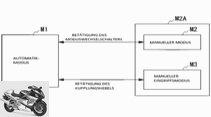
Honda
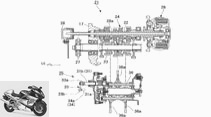



8th pictures
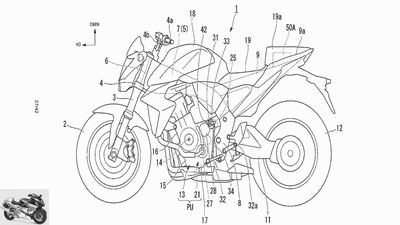
Honda
1/8
Honda’s invention addresses the technical compromise of the anti-hopping clutch and adds a semi-automatic system to the system.
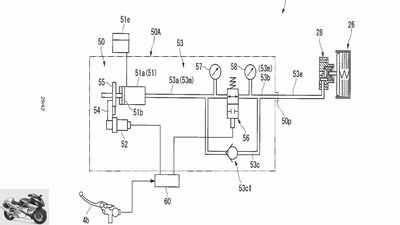
Honda
2/8
The clutch work is only initiated by the clutch lever, the electronics take care of the rest.

Honda
3/8
The conventionally designed gearbox with a continuous coupling rod for the hydraulics is still switched by the foot, but the coupling is controlled hydraulically.

Honda
4/8
Honda thinks of adding a pure manual clutch mode to the convenience of the automatic clutch. The main focus of the invention, however, is to separate the braking torque of the motor from the rear wheel.
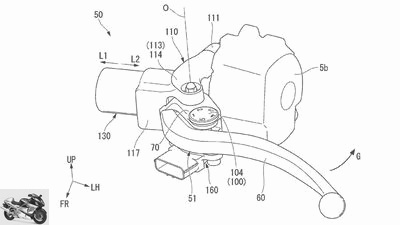
Honda Motors
5/8
In addition to the new clutch control, Honda has also rethought the operation of the clutch lever: Clutch-by-Wire.
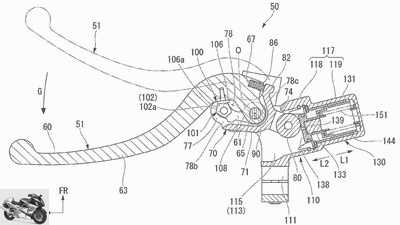
Honda Motors
6/8
The new valve works without hydraulic fluid and without a reservoir. Perhaps a maintenance-free hydraulic cylinder should provide the familiar clutch feeling on the lever.
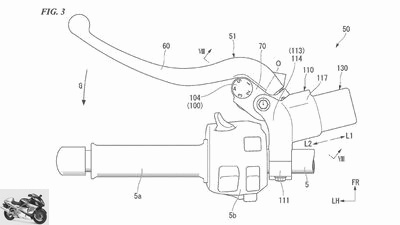
Honda Motors
7/8
The advantages of the system are the freedom from maintenance, less installation space and also: no more toxic chemicals in a hydraulic system.

Honda Motors
8/8
The cooperation of all active driving systems also benefits from an electronic control of the clutch, so the shift pauses can be kept shorter or the traction control can be regulated much more finely if the clutch disengages slightly before the injection is throttled.
counselor
technology & future
Honda patent new sports clutch: Clutch-by-Wire
Honda engages electrically
Clutch-by-wire and semi-automatic
Honda has an invention protected that combines a new type of slipper clutch with the advantages of semi-automatic and clutch-by-wire in one system.
Jens Kratschmar
06/09/2021
Due to its design, a motorcycle is a physically unstable unit and tends to tip over. It cannot just stand on both wheels, the front wheel tends to climb when accelerating hard, and the dynamic wheel load distribution with conventional chassis means that the rear wheel is light, jumping or floating when braking hard. The side stand is proven against falling over and electronic measures keep the front wheel on the ground if necessary. There are anti-hopping clutches that work well against the light rear wheel and the unrest in the chassis, when the wheel has full grip again and transfers the engine braking torque, but they only compensate for the effects. They do not address the cause of the effective engine braking torque. And the manual hydraulic actuation of the clutch, which is still today, has potential for improvement.
Honda disengages
Honda is committed to tackling the root causes patent an invention. It is supposed to recognize the relieved rear wheel via wheel speeds and accelerations and to separate the clutch electronically controlled. In this way, the engine braking torque is not even transmitted, and even minimal impulses are not fed into the chassis. Accordingly, the clutch can become mechanically lighter again and can do without the known back torque limiters in the form of different cam mechanisms.
Honda engages electrically
An interesting side effect of the invention is that the entire clutch can work automatically by means of the electronic control of the hydraulic system for the braking torque. A clutch lever is still available and operates the system conventionally, but without hydraulics on the master cylinder. The signal for the clutch is electronically sent to the slave cylinder, where it is converted into hydraulic power. With the appropriate modes, however, the entire work of the clutch can also be carried out automatically. Starting or stopping is then also subject to the controlled modes. The driver still does the shifting process by foot himself, whereby an automatic shifting system is obvious here too. A Rekluse or centrifugal clutch is not used.
Clutch-by-wire in a motorcycle
The advantages are apparent. On the one hand, the system is very low-maintenance thanks to the hydraulic system, which also saves a lot of environmentally harmful fluids. On the other hand, such a system allows a much better interface between the active driving system, such as a stability control, since the torque of the motor could be minimally absorbed via the clutch before hard intervention. Effects such as unintentional stalling or starting with a lot of slip on the clutch are also prevented. But it probably doesn’t work entirely without hydraulics on the lever: A corresponding cylinder is built into the housing to give the familiar feeling on the clutch lever. By the way: Honda has given the entire system a fail-safe mechanism: if the switch arm valve fails, the clutch remains closed anyway, as the actual clutch actuation works via a secondary or slave circuit. Conversely, the frictional connection is interrupted if the driver is no longer able to do so due to a fall.
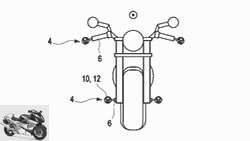
technology & future
BMW radar reflector patent
Hello car, here I am
read more
Electric motor with gear
In its invention, Honda does not limit itself to the internal combustion engine as we know it, but also explicitly mentions the possible use of the system in an electric motor with a gearbox. There is no direct reference to such a drive in development, but Honda is at least thinking in this electrified direction.
Conclusion
A functioning clutch-by-wire system would replace the mechanical compromise of the anti-hopping clutch and would also reassess the electronic engine brakes attached to it today. The semi-automatic switching function should also be of interest to many. Modern quickshifters are very close, but unfortunately always with the drawback that the mixture preparation is permanently interfered with and a real, wear-inhibiting power separation does not take place. So this Honda patent is very interesting, especially when it comes to upcoming emissions standards.
Related articles
-
Honda V2 with supercharging: patent for supercharged V-twin
Honda 8th pictures Honda 1/8 Honda has had a V2 with supercharged technology protected with various patents. Honda 2/8 The compressor drive is located to…
-
Honda patent: all-wheel drive to generate electricity
Honda 3 pictures Honda 1/3 Honda is probably planning to use front-wheel drive to increase the potential of generating braking energy in electric drives….
-
Honda engine 5 pictures Honda engine 1/5 In 2021, a rather old patent application from Honda suddenly appeared in Germany as well. Honda patented the…
-
Honda patent for steering assistant: steers when the wheel slips
Honda 21 pictures Honda Europe 1/21 The Goldwing Tour with DCT in the noble Candy-Argent-Red. Honda Europe 2/21 The color is only available as a Tour…
-
Honda patent: drone as a dinghy
Honda 5 pictures Honda 1/5 Honda has patented a system in the USA in which an electric motorcycle works together with a drone. Honda 2/5 The drone itself…
-
Patent for electric Honda: batteries to change
Honda 4th pictures Honda 1/4 A tubular steel frame forms the backbone of the new electric Honda scooter, the motor sits in the swing arm, the two…
-
Honda compressor patent: series twin with supercharging
Honda 5 pictures Honda 1/5 Honda has combined the Africa Twin’s in-line twin with a supercharger in a patent specification. Honda 2/5 The twin screw…
-
Honda patent new variable valve timing
Honda 12th pictures Honda 1/12 Honda has patented a new variable valve control. Honda 2/12 The new variable valve control in the engine of the upcoming…
-
Honda patent: Fireblade indicator as a winglet?
Honda 5 pictures Honda 1/5 Honda is finally tackling the still unattractive indicator shapes and positions. Honda 2/5 Honda has patented an invention…
-
Bosch patent for electric motor with ABS: brake charges battery
Bosch counselor technology & future Bosch patent for electric motor with ABS: brake charges battery Bosch patent for electric motor with ABS Brake…